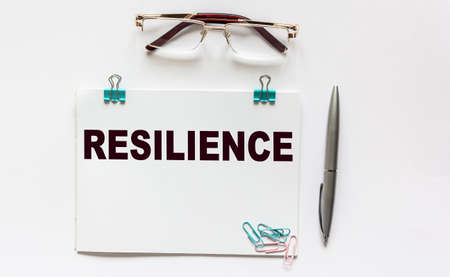Introduction: The Urgency of Supply Chain Resilience
The COVID-19 pandemic laid bare the vulnerabilities within the UK’s supply chains, prompting both public and private sectors to confront challenges that few had previously anticipated. As the virus spread rapidly across the globe, the UK faced unprecedented disruptions in critical sectors—from healthcare and food distribution to manufacturing and retail. Supermarket shelves were stripped bare, personal protective equipment (PPE) shortages hit the NHS hard, and manufacturers scrambled to source essential components. This period of uncertainty highlighted just how interconnected and fragile supply networks had become. For many organisations, it was a stark wake-up call: resilience was no longer an abstract concept but a national priority. The government and businesses alike quickly realised that building robust, flexible supply chains is essential not only for crisis response but also for everyday reliability and future growth. The lessons learned during this period continue to shape strategies, policies, and investments, underscoring the vital importance of anticipating risks and ensuring continuity in an increasingly volatile world.
2. Challenges Faced by UK Supply Chains
The onset of the COVID-19 pandemic exposed several vulnerabilities within UK supply chains, many of which were exacerbated by concurrent events such as Brexit. Key disruptions ranged from complex regulatory changes to acute shortages in critical supplies and logistical gridlock. Understanding these challenges is crucial for building resilience in future crises.
Brexit-related Complexities
As the pandemic unfolded, the UK was simultaneously adapting to new post-Brexit trade arrangements. This dual shock created unprecedented uncertainty for importers and exporters alike. Customs checks, revised paperwork requirements, and shifting tariffs led to delays at borders and increased administrative burden. Many businesses found themselves unprepared for the added layer of bureaucracy, with smaller firms particularly affected by the lack of resources to navigate new regulations.
PPE Shortages
Perhaps one of the most publicised challenges was the shortage of personal protective equipment (PPE). The sudden surge in demand outstripped existing stockpiles, while global competition for limited supplies intensified procurement difficulties. Domestic manufacturing capacity proved insufficient, highlighting a reliance on international suppliers that could not always deliver under pressure.
PPE Availability During Early Pandemic
| Month | Supply Status | Main Issues |
|---|---|---|
| March 2020 | Critical Shortage | Global demand spike, limited local production |
| April 2020 | Severe Shortage | Logistics bottlenecks, customs delays |
| May 2020 | Slight Improvement | Increased imports, gradual ramp-up of local manufacturing |
Transport Bottlenecks
The combination of lockdowns, social distancing measures, and a reduced workforce led to significant delays across road, rail, and sea freight networks. Ports experienced congestion due to surges in certain goods while others languished unused. Driver shortages—exacerbated by both illness and Brexit-related migration changes—further strained distribution networks.
Summary Table: Major Disruptions During COVID-19
| Disruption Type | Description |
|---|---|
| Regulatory Complexity | New customs rules post-Brexit complicated cross-border trade |
| PPE Shortages | Demand exceeded supply; high dependence on overseas producers |
| Transport Delays | Bottlenecks at ports and within domestic freight due to workforce and logistical constraints |
![]()
3. Core Lessons Learned from the UK COVID-19 Response
The UK’s experience during the COVID-19 pandemic revealed several critical lessons for building resilient supply chains, particularly in the context of managing uncertainty, adapting procurement strategies, and fostering cross-sector collaboration. As we reflect on this period, three key takeaways emerge that are essential for future preparedness.
Managing Uncertainty in Real-Time
One of the defining challenges faced by supply chain professionals was the unprecedented level of uncertainty—ranging from unpredictable demand for PPE to disruptions in global logistics. The rapid shifts demanded agile decision-making and a willingness to act with incomplete information. British organisations learned to value scenario planning, dynamic risk assessments, and the cultivation of flexible supplier relationships. Regular communication with stakeholders, both internal and external, proved vital for sharing updates and recalibrating priorities as situations evolved.
Adapting Procurement Strategies
The traditional procurement model was stress-tested under pandemic conditions. Organisations shifted from rigid, cost-focused approaches to more adaptive strategies prioritising resilience and reliability. There was a notable pivot towards diversifying suppliers—not just sourcing locally but also building robust relationships with multiple international partners. Framework agreements and expedited tendering processes became commonplace, enabling faster response times without compromising due diligence or transparency. Public sector buyers worked closely with legal teams to maintain compliance while streamlining processes.
Collaboration Across Sectors
Perhaps most striking was the spirit of collaboration that emerged across sectors. Government departments, NHS trusts, private companies, and voluntary organisations found common ground in their shared objectives. Data-sharing platforms and joint task forces were established to break down silos and pool resources efficiently. This whole-of-society approach accelerated problem-solving and innovation—for example, through the rapid scaling up of domestic manufacturing or coordinated distribution networks for critical supplies.
Critical Takeaways for Future Resilience
The UK’s pandemic response underscored that resilience is not simply about stockpiling or contingency plans—it is built on adaptability, transparent communication, and strong partnerships. For British supply chains moving forward, embedding these lessons into standard practice will be essential in facing whatever uncertainties may come next.
4. Embracing Localisation and Diversified Sourcing
The COVID-19 pandemic was a wake-up call for UK organisations, exposing the vulnerabilities of relying heavily on global supply chains. In the face of international disruptions, many British businesses rapidly shifted focus towards local suppliers and diversified their procurement strategies to strengthen their resilience. This approach not only helped mitigate risks but also fostered stronger community ties and greater agility.
The Shift Towards Local Suppliers
During the early stages of the pandemic, supply chain bottlenecks—particularly in sectors such as food, medical equipment, and PPE—prompted UK companies to reassess their sourcing strategies. By prioritising local suppliers, organisations gained more direct oversight and control over their inventory flows. Moreover, supporting domestic producers resonated with British values of community spirit and sustainability.
Benefits Realised by Local Sourcing
| Benefit | Description |
|---|---|
| Improved Lead Times | Shorter transport distances reduced delivery delays during lockdowns. |
| Stronger Supplier Relationships | Closer proximity allowed for better communication and collaboration. |
| Enhanced Supply Chain Visibility | Easier monitoring of supplier practices ensured quality and compliance. |
Diversifying Procurement Strategies
Alongside localisation, UK organisations recognised the value in diversifying their supplier base. Relying on a single source or region posed significant risks; therefore, businesses began to spread procurement across multiple vendors and geographies. This strategy increased flexibility and provided alternative options when one channel became constrained.
Case Example: NHS Trusts’ Approach
NHS Trusts implemented dual or multi-sourcing for critical items like ventilators and pharmaceuticals. By doing so, they could pivot quickly between suppliers depending on availability—a practice that has since become an industry standard.
Key Takeaways for Future Resilience
- Combining localisation with diversification creates a robust buffer against future disruptions.
- Building relationships with local suppliers enhances trust and adaptability.
- Regularly reviewing procurement strategies ensures continued alignment with shifting market dynamics and regulatory requirements.
The UK’s experience during COVID-19 has shown that embracing both local partnerships and diversified sourcing is not just about risk mitigation—it is a strategic investment in long-term operational stability.
5. Digital Transformation in Supply Chain Operations
The COVID-19 pandemic highlighted the urgent need for supply chains across the UK to adapt rapidly to unprecedented levels of disruption. One of the most significant shifts observed during this period was the accelerated adoption of digital tools and data-driven strategies. Organisations, both public and private, recognised that traditional manual processes simply could not cope with the pace and complexity of the challenges they faced.
Embracing Real-Time Visibility
Real-time tracking and monitoring systems became essential for managing inventory, anticipating shortages, and responding to sudden changes in demand. For example, many NHS trusts implemented advanced stock management platforms, which enabled them to track PPE supplies across multiple sites, improving transparency and reducing wastage.
Data-Driven Decision Making
The use of analytics and dashboards allowed decision-makers to act swiftly based on up-to-date information. Retailers and logistics providers leveraged demand forecasting models powered by machine learning to allocate resources more efficiently, ensuring that critical goods reached communities when they were needed most.
Agility Through Automation
Automation played a key role in boosting resilience. From robotic process automation handling repetitive administrative tasks to automated warehousing solutions speeding up fulfilment, these technologies helped organisations maintain operations even when staff numbers were reduced due to illness or social distancing requirements.
In summary, the pandemic served as a catalyst for digital transformation within UK supply chains. The lessons learned point towards a future where digital infrastructure is not just a competitive advantage but a fundamental requirement for resilience and agility in the face of ongoing uncertainty.
6. Investing in People and Skills Development
The COVID-19 pandemic brought into sharp focus the pivotal role that people play within supply chains, particularly across the UK. As businesses scrambled to maintain continuity during unprecedented disruption, it became increasingly clear that a resilient supply chain is not just about robust infrastructure or digital tools, but fundamentally about the capabilities and adaptability of its workforce.
Upskilling for Future Resilience
One of the key lessons from the UK’s response was the urgent need to upskill workers at every level of the supply chain. As traditional roles evolved rapidly—whether in logistics, warehousing, procurement or last-mile delivery—the demand for digital literacy, problem-solving skills and agile thinking soared. Employers who invested in ongoing training programmes found themselves better equipped to navigate shortages, border delays, and shifting consumer behaviours.
Supporting Workforce Wellbeing
Another crucial aspect highlighted by the pandemic was supporting the wellbeing of those on the front lines. In the UK, many organisations took proactive steps: introducing flexible working arrangements, prioritising mental health support, and ensuring safe working conditions. Such measures not only protected staff during the crisis but also fostered loyalty and a sense of shared purpose—qualities vital for weathering future shocks.
Building a Culture of Lifelong Learning
A forward-thinking approach now gaining traction across British industry is embedding lifelong learning into company culture. Apprenticeships, accredited training schemes, and partnerships with local colleges have proved effective in plugging skills gaps and attracting new talent into sectors traditionally overlooked by younger generations. The pandemic demonstrated that when employees are empowered to learn and adapt, organisations are far more capable of responding swiftly to unforeseen challenges.
In summary, strengthening supply chain resilience in the UK must be underpinned by sustained investment in people. By prioritising upskilling initiatives and supporting workforce wellbeing, businesses can build agile teams ready to face both ongoing uncertainties and emerging opportunities.
7. Conclusion: Shaping the Future of Resilient Supply Chains in the UK
Reflecting on the lessons learned from the UKs response to COVID-19, it is clear that building truly resilient and sustainable supply chains requires a fresh perspective rooted in local context. The pandemic exposed vulnerabilities but also sparked innovation and collaboration across industries, government, and communities. As we look to the future, British supply chains must balance agility with sustainability—leveraging technology, fostering partnerships, and investing in skills development at every level.
A future-proof supply chain for the UK will be characterised by strong regional networks that reduce reliance on single points of failure and overseas bottlenecks. Local sourcing and manufacturing, supported by digital tools such as real-time tracking and predictive analytics, can help manage risk while supporting British businesses. Additionally, increased transparency and information-sharing among stakeholders—from hauliers to high street retailers—will be vital to respond rapidly to disruptions.
Sustainability must underpin these efforts. This means integrating environmental objectives, such as reducing carbon emissions and waste, alongside social considerations like fair employment practices and community engagement. The post-pandemic landscape gives the UK an opportunity to champion circular economy models and ethical sourcing as part of its global identity.
Ultimately, the resilience of Britains supply chains will depend on a willingness to adapt, experiment, and learn from both setbacks and successes. By embedding flexibility into logistics strategies and nurturing a culture of continuous improvement, UK organisations can ensure they are better prepared for whatever challenges lie ahead. The journey towards robust, future-ready supply chains is ongoing—but with commitment and innovation, the UK is well-placed to lead by example.


